The first meal of the day is often hailed as the most important, and for individuals managing high blood pressure, that adage holds even greater significance. Scientific research continues to confirm what many nutritionists have long suspected: starting your day with a strategically composed breakfast can have measurable impacts on cardiovascular health. Specifically, the best breakfast to lower blood pressure naturally is one that emphasizes whole foods, key nutrients like potassium, magnesium, and fiber, and avoids excess sodium, saturated fats, and refined sugars. Understanding the optimal breakfast for high blood pressure involves not just recognizing which foods support healthy blood pressure regulation, but also how these foods work synergistically within the body to maintain vascular balance and reduce strain on the cardiovascular system.
You may also like: 4 Ways to Have a Healthy Diet: Expert Tips Backed by Science for Better Nutrition and Long-Term Wellness
Many people with hypertension—or those at risk—are often advised to adopt a DASH-style (Dietary Approaches to Stop Hypertension) eating pattern. While this overall dietary framework is well-known, its application to breakfast specifically can make the difference between a meal that merely fills the stomach and one that actively promotes cardiovascular wellness. This article explores the best breakfast to lower blood pressure naturally, offering evidence-based recommendations that align with the principles of nutrient timing, heart-smart eating, and metabolic regulation. From whole grains and omega-3-rich foods to antioxidant-packed berries and low-fat dairy, the science behind breakfast choices is far more compelling than simply avoiding bacon or skipping salt.
Understanding How Breakfast Influences Blood Pressure Regulation
Before diving into specific breakfast components, it is essential to understand why breakfast plays such a vital role in blood pressure regulation. Overnight, the body enters a fasting state that, when prolonged, can trigger stress-related hormonal fluctuations, including elevated cortisol levels. These hormones can contribute to temporary spikes in blood pressure in the early morning hours. A balanced, nutrient-dense breakfast helps blunt this hormonal response, stabilizing glucose and insulin levels, while also supporting nitric oxide production and endothelial function—both of which are central to healthy blood vessel dilation.
Additionally, breakfast sets the tone for dietary habits throughout the day. Skipping breakfast or opting for processed, sodium-laden foods first thing in the morning can increase cravings for salty and sugary snacks later on, creating a cyclical pattern that elevates blood pressure risk over time. Consuming a breakfast rich in heart-healthy nutrients improves satiety, modulates appetite hormones such as ghrelin and leptin, and promotes stable energy levels, which in turn may reduce the likelihood of stress-induced eating. Therefore, the impact of breakfast extends beyond the immediate metabolic window and into the broader behavioral patterns that influence long-term blood pressure management.
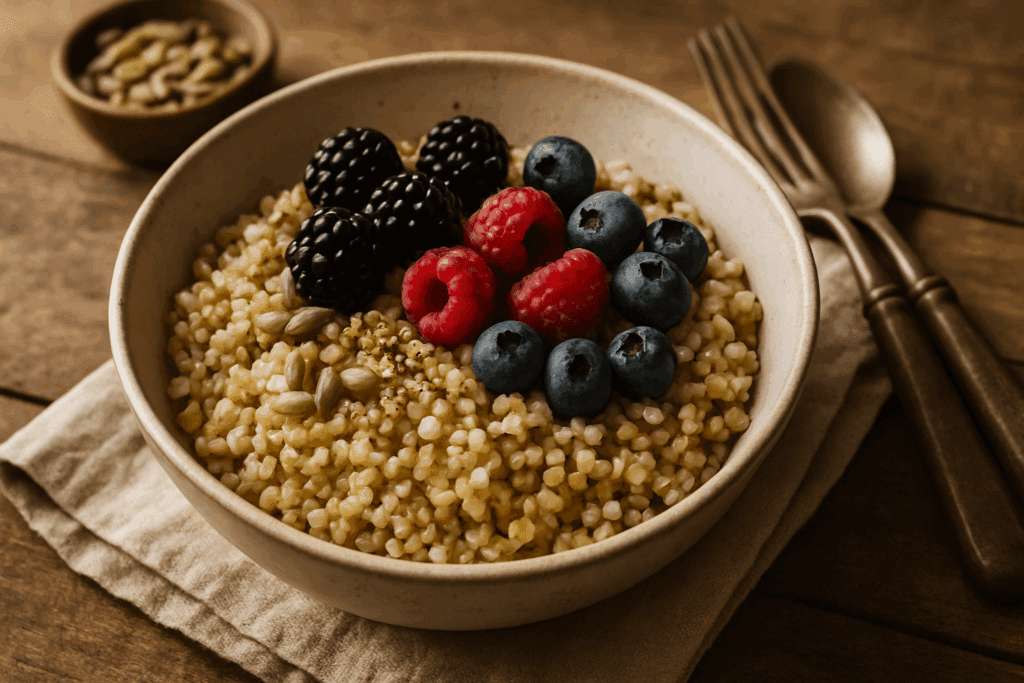
Whole Grains: A Foundation for Cardiovascular Support
Among the most studied and recommended breakfast staples for individuals with high blood pressure are whole grains. Unlike refined grains, which are stripped of their bran and germ layers during processing, whole grains retain their full nutrient profile, including fiber, B vitamins, and key minerals like magnesium and potassium. These compounds are instrumental in lowering systolic and diastolic blood pressure. Magnesium, for instance, plays a crucial role in relaxing blood vessels, improving endothelial function, and inhibiting calcium-mediated vasoconstriction.
Oats, in particular, have demonstrated remarkable benefits for heart health. Rich in a soluble fiber called beta-glucan, oats help reduce LDL cholesterol and support arterial flexibility. Clinical trials have shown that individuals who consume oats regularly as part of their breakfast regimen experience modest yet clinically significant reductions in blood pressure. Other excellent options include quinoa, barley, bulgur, and whole grain breads made without added sugars or sodium. For the best breakfast to lower blood pressure, choosing minimally processed grains ensures both nutritional density and glycemic stability, helping to avoid the insulin surges that can indirectly affect vascular tone.
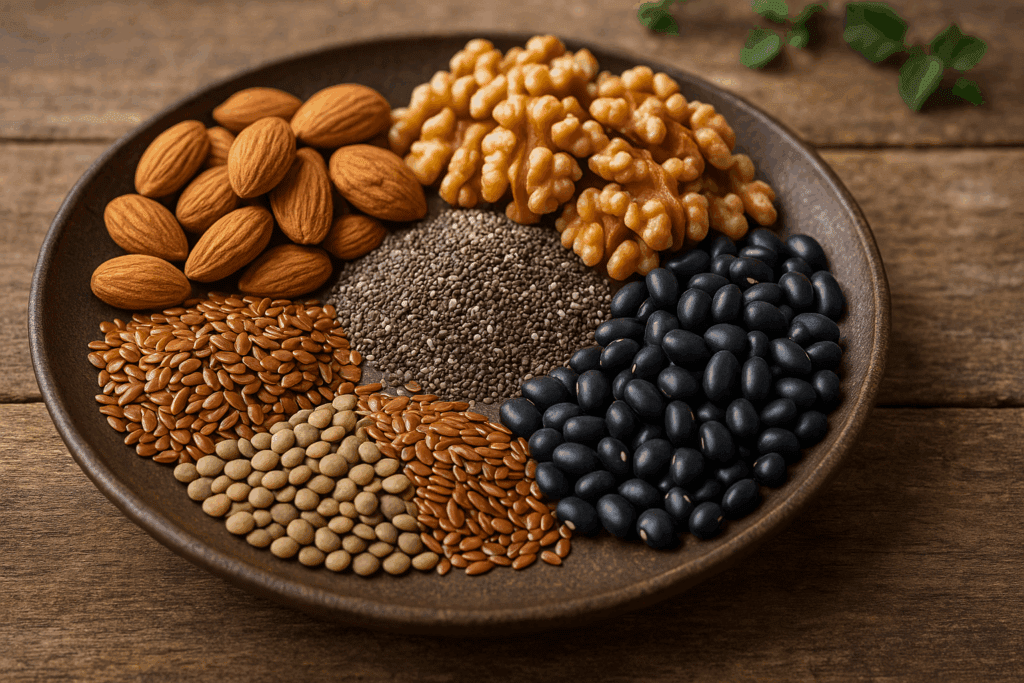
Plant-Based Proteins: The Power of Legumes, Nuts, and Seeds
Protein is a vital macronutrient in any breakfast, but its source can make a substantial difference in terms of cardiovascular outcomes. While traditional breakfast proteins like bacon, sausage, and full-fat cheese are often high in saturated fat and sodium, plant-based proteins provide a heart-smart alternative. Legumes such as lentils and black beans, when incorporated into breakfast dishes like savory oat bowls or grain-based scrambles, supply fiber, potassium, and bioactive compounds that support vascular relaxation.
Nuts and seeds also deserve recognition for their powerful nutrient profiles. Almonds, walnuts, flaxseeds, and chia seeds are rich in omega-3 fatty acids, magnesium, and polyphenols that help reduce inflammation and oxidative stress—both key contributors to high blood pressure. Studies suggest that daily consumption of a moderate amount of nuts is associated with improved endothelial function and reduced arterial stiffness. Including a tablespoon of flaxseed in oatmeal or spreading almond butter on whole grain toast are simple yet effective ways to infuse breakfast with these blood pressure-lowering compounds.
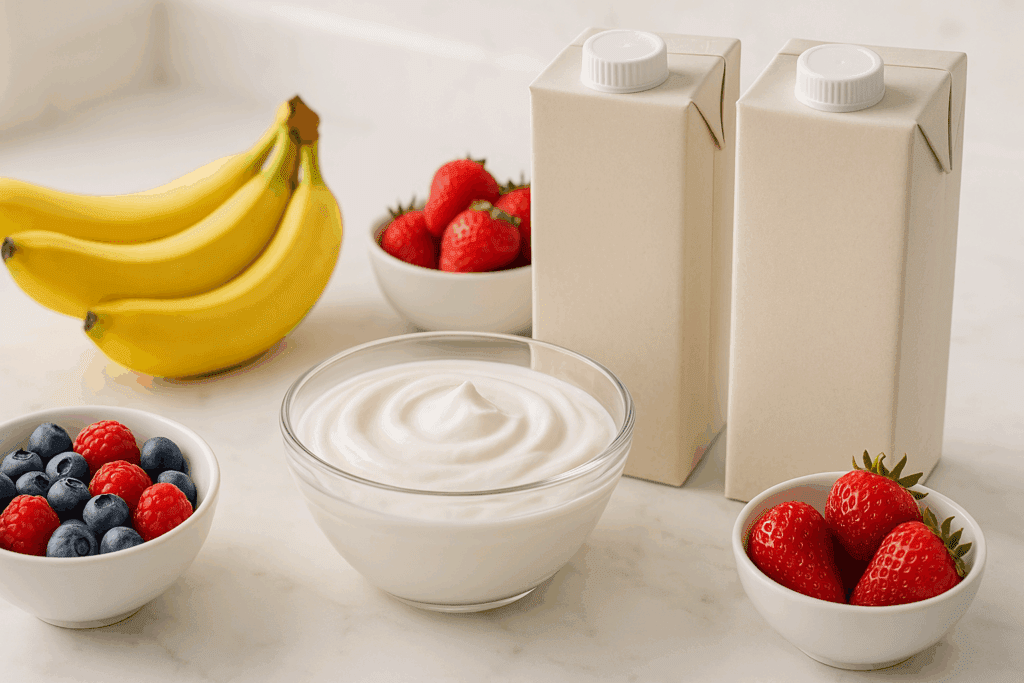
Low-Fat Dairy and Fortified Alternatives: Calcium and Peptide Benefits
Calcium has long been associated with healthy blood pressure levels, and low-fat dairy products remain a well-documented source of this essential mineral. Yogurt, particularly plain Greek yogurt, is also rich in probiotics and bioactive peptides that have been shown to inhibit angiotensin-converting enzyme (ACE) activity. This mechanism mimics the effect of certain blood pressure medications, resulting in vasodilation and reduced systemic pressure.
For individuals who are lactose intolerant or prefer plant-based options, fortified non-dairy milks such as almond, soy, or oat milk can also contribute valuable calcium and vitamin D when chosen carefully. It’s important to opt for unsweetened, low-sodium versions that have been enriched with essential nutrients. Pairing these milks with high-fiber cereals or smoothies allows for a nutrient synergy that enhances mineral absorption and provides long-lasting satiety. When evaluating the best breakfast to lower blood pressure, the inclusion of dairy or dairy alternatives is a strategic choice that balances protein, calcium, and hydration needs.
Fruits and Vegetables: Colorful Allies in Blood Pressure Control
No heart-healthy breakfast would be complete without the vibrant addition of fruits and vegetables. These foods are naturally low in calories and sodium, while providing an abundance of potassium, vitamin C, folate, and polyphenols. Berries, in particular, stand out for their high anthocyanin content—a class of flavonoids that has been associated with lower blood pressure in both epidemiological and clinical studies.
Bananas are another excellent choice, thanks to their high potassium-to-sodium ratio, which helps counteract the blood-pressure-raising effects of sodium. Leafy greens such as spinach and kale can be blended into smoothies or folded into omelets made with egg whites or plant-based egg substitutes. Tomatoes, bell peppers, and avocados offer additional antioxidant protection and can be included in savory breakfast bowls or whole grain wraps. The best breakfast to lower blood pressure includes a generous helping of produce, not only for its immediate nutrient value but also for its cumulative effect on systemic inflammation and vascular reactivity.
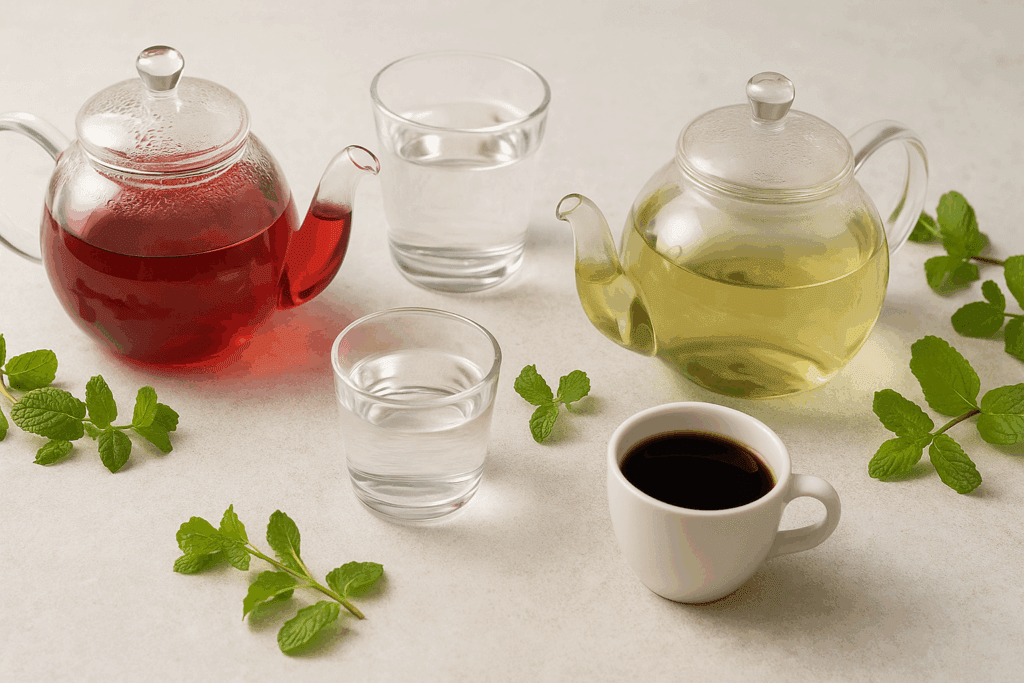
Hydration and Morning Beverages: What to Sip With Caution
Although food choices are central to breakfast composition, beverages also play a critical role in either supporting or undermining blood pressure goals. Coffee, while once considered detrimental due to its caffeine content, has shown more nuanced effects in recent research. Moderate coffee consumption—particularly when unsweetened and not paired with high-fat creamers—may have neutral or even beneficial effects due to its polyphenol content. However, individuals sensitive to caffeine or with poorly controlled hypertension should limit intake or opt for decaffeinated alternatives.
Herbal teas such as hibiscus have demonstrated antihypertensive properties, with several studies noting reductions in both systolic and diastolic readings after regular consumption. Green tea, rich in catechins, also supports endothelial function and may aid in reducing arterial stiffness. On the other hand, sugar-laden juices and energy drinks should be avoided, as their high glycemic load and added sodium can contribute to fluid retention and vascular stress. The best breakfast to lower blood pressure naturally incorporates hydration strategies that align with the body’s need for fluid balance without introducing harmful stimulants or excess sugar.
Reducing Sodium Without Sacrificing Flavor
One of the most overlooked aspects of crafting a breakfast for high blood pressure is the hidden sodium content found in common breakfast items. Store-bought cereals, breads, canned beans, and even some plant-based milks can contain significant amounts of added sodium. To counter this, it’s essential to read nutrition labels carefully and prioritize fresh, whole ingredients whenever possible. Cooking from scratch enables better control over seasoning and allows for the use of herbs, spices, and citrus to enhance flavor without adding salt.
Using ingredients like garlic, turmeric, cumin, paprika, and fresh lemon juice not only reduces sodium dependency but also introduces compounds with their own cardiovascular benefits. For example, garlic has natural ACE-inhibiting properties, while turmeric reduces inflammation and may improve endothelial function. These flavorful additions ensure that breakfast remains enjoyable while staying aligned with the nutritional priorities required to lower blood pressure. Balancing taste and health need not be a compromise—it can be a culinary opportunity to explore new, heart-healthy cuisines.
Timing, Consistency, and Behavioral Patterns
Beyond food selection, the timing and consistency of breakfast consumption play a vital role in its effectiveness as a tool for blood pressure management. Studies suggest that individuals who eat breakfast regularly—particularly within the first two hours of waking—experience better metabolic outcomes, including lower blood pressure readings and improved insulin sensitivity. This may be attributed to the synchronization of circadian rhythms with metabolic processes, enhancing nutrient utilization and hormonal regulation.
In contrast, erratic eating patterns, such as skipping breakfast or delaying food intake until late in the day, can disrupt the body’s internal clock and elevate stress responses. A consistent morning routine that includes a balanced, nutrient-dense breakfast helps reinforce healthy habits and can serve as a psychological anchor for the rest of the day. In the context of long-term behavior change, this consistency is crucial for sustaining improvements in blood pressure and overall cardiovascular health.
Common Breakfast Pitfalls to Avoid
Even with the best intentions, certain breakfast choices can undermine efforts to manage high blood pressure. Processed breakfast meats, sugary cereals, pastries, and flavored yogurts are often marketed as convenient or wholesome but are frequently loaded with sodium, added sugars, and unhealthy fats. These ingredients not only raise blood pressure directly but also promote weight gain, insulin resistance, and systemic inflammation.
Another common mistake is over-relying on packaged “health” foods that contain misleading labels. Granola bars, for instance, may seem like a smart choice but often contain more sugar than a dessert. Smoothies can also become problematic when made with fruit juices, flavored yogurts, or sweetened protein powders. To ensure a breakfast for high blood pressure truly serves its intended purpose, it is critical to prioritize transparency in ingredient sourcing and preparation. Home-prepared meals using whole, minimally processed ingredients offer the greatest control and nutritional assurance.
Integrating Mindfulness and Stress Reduction
Although the biochemical composition of breakfast is foundational, the psychological context in which the meal is consumed should not be overlooked. Mindful eating practices—such as slowing down, avoiding distractions, and appreciating each bite—have been associated with improved digestion, reduced stress, and better blood pressure outcomes. Eating in a calm environment, without screens or multitasking, helps activate the parasympathetic nervous system, promoting relaxation and efficient nutrient absorption.
Furthermore, combining breakfast with stress-reducing practices such as deep breathing, gentle stretching, or even a brief walk outdoors can amplify the cardiovascular benefits of a healthy meal. The interplay between stress and hypertension is well-documented, and a mindful morning routine that integrates both nourishment and relaxation is a powerful strategy for long-term heart health. These behavioral elements, while less frequently discussed, are essential to creating a sustainable lifestyle that supports blood pressure regulation.
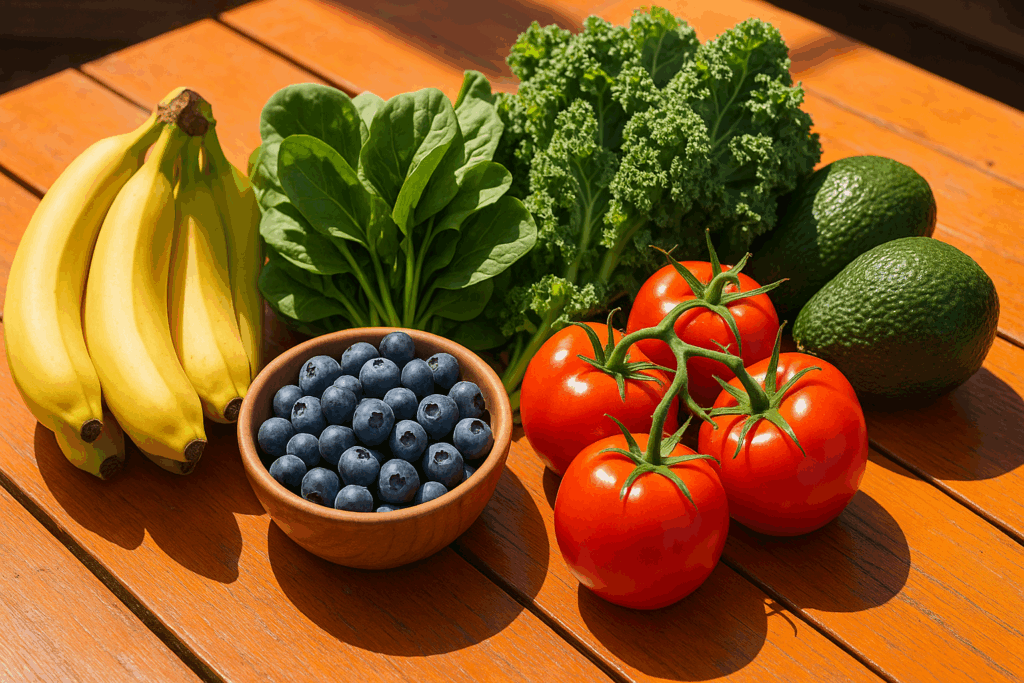
Frequently Asked Questions: Best Breakfast to Lower Blood Pressure Naturally
1. Can eating breakfast actually influence long-term blood pressure outcomes?
Yes, consistent breakfast habits can have a long-term impact on blood pressure. Beyond providingimmediate nourishment, breakfast plays a regulatory role in circadian rhythms, hormonal balance, and metabolic stability. Skipping breakfast may lead to increased cortisol levels and elevated sympathetic nervous system activity, both of which can raise blood pressure over time. A strategically planned breakfast for high blood pressure supports vascular elasticity and improves sodium-potassium balance, which is crucial for controlling hypertension in the long term. The best breakfast to lower blood pressure isn’t a quick fix—it’s a cornerstone of a sustainable, heart-healthy lifestyle.
2. Are there emerging trends in nutritional science that affect what we consider the best
breakfast to lower blood pressure? Absolutely. Recent advancements in personalized nutrition andmetabolomics are shaping how we evaluate breakfast for high blood pressure. For example, researchers are now investigating genetic variants that influence how individuals process sodium, potassium, and dietary fats—factors that significantly affect morning blood pressure readings. Some studies also explore the timing of nutrient intake, with chrono-nutrition suggesting that front-loading calories earlier in the day may help stabilize blood pressure more effectively. This means the best breakfast to lower blood pressure may one day be tailored not only to general guidelines but also to individual biological rhythms and genomic profiles.
3. Can breakfast choices impact how blood pressure medications work throughout the day?
Yes, your breakfast can affect the pharmacokinetics of certain blood pressure medications. Forinstance, high-fat or high-fiber breakfasts may interfere with the absorption of calcium channel blockers or ACE inhibitors, potentially altering their intended effects. Conversely, a breakfast rich in potassium and magnesium may complement the actions of these drugs, improving outcomes and reducing the need for dosage adjustments. Patients managing hypertension should speak with their healthcare providers to determine whether their breakfast for high blood pressure might interact with or enhance their medication regimen. Integrating dietary and pharmaceutical strategies is a sophisticated way to optimize blood pressure control.
4. How does breakfast composition affect blood pressure in people with comorbid conditions like diabetes or kidney disease?
In individuals with conditions such as diabetes or early-stage kidney disease, breakfast compositionbecomes even more critical. A breakfast for high blood pressure in these populations must balance not only sodium and potassium but also carbohydrate load and phosphorus content. For example, diabetics benefit from low-glycemic options like steel-cut oats and legumes, which minimize blood sugar spikes that can exacerbate vascular damage. For kidney patients, potassium-rich foods may need to be moderated, even if they’re part of the best breakfast to lower blood pressure for the general population. Tailoring breakfast based on comorbid conditions highlights the importance of personalized dietary planning.
5. How do cultural food traditions align with a heart-healthy breakfast for high blood pressure?
Cultural food traditions can both enhance and hinder heart-healthy breakfast efforts, depending onhow they’re adapted. For example, a traditional Japanese breakfast with miso soup, grilled fish, and rice can be modified by reducing sodium in the miso and adding fresh greens. Mediterranean breakfasts, rich in olive oil, whole grains, and fruit, naturally align with the best breakfast to lower blood pressure. Meanwhile, some Western breakfasts heavy in processed meats and refined grains may require a more significant overhaul. Embracing cultural foods while adjusting preparation methods allows individuals to enjoy familiar meals without compromising cardiovascular health.
6. What role does stress during breakfast play in blood pressure management?
Stress can significantly influence how the body responds to breakfast. Eating in a rushed or tenseenvironment may trigger the release of stress hormones like adrenaline and cortisol, counteracting the benefits of even the most nutritious breakfast for high blood pressure. Incorporating mindfulness practices—such as deep breathing, expressing gratitude, or avoiding screens—can enhance digestion and absorption of nutrients that help regulate blood pressure. The best breakfast to lower blood pressure is not just about what’s on the plate, but also about the mental state of the person eating it. A calm, intentional morning ritual can be just as therapeutic as the meal itself.
7. Are smoothies a good option for a breakfast designed to lower blood pressure?
Smoothies can be a highly effective component of a breakfast for high blood pressure, providedthey’re formulated thoughtfully. Many commercial or store-bought smoothies are high in added sugars, which can spike insulin and indirectly increase blood pressure. However, a homemade smoothie with ingredients like spinach, banana, flaxseed, unsweetened almond milk, and berries can deliver potassium, fiber, omega-3s, and antioxidants without excess sugar. The best breakfast to lower blood pressure may include smoothies as a convenient way to pack in multiple nutrients that support cardiovascular health—just be cautious of the ingredients.
8. How does meal prep influence consistency in maintaining a breakfast for high blood pressure?
Meal prep plays a critical role in maintaining consistency and avoiding poor morning choices. Whenbreakfast is pre-planned or pre-prepared, there is less temptation to default to high-sodium, high-sugar convenience foods. For individuals with hypertension, batch-cooking overnight oats, prepping hard-boiled eggs, or blending smoothie packs in advance can ensure that the best breakfast to lower blood pressure is both accessible and enjoyable. Additionally, creating a rotating menu of pre-approved meals prevents breakfast fatigue, which is a common barrier to dietary adherence. Strategic meal prep transforms intentions into sustainable habits.
9. Can fasting or skipping breakfast ever be beneficial for people with high blood pressure?
While intermittent fasting has gained popularity, skipping breakfast may not be ideal for individualswith hypertension. Fasting can elevate morning cortisol levels, potentially leading to transient increases in blood pressure. However, some people do benefit from time-restricted eating when breakfast is timed appropriately within an 8- or 10-hour feeding window. It’s important to distinguish between structured fasting under medical supervision and chaotic skipping of meals, which tends to destabilize metabolic markers. The best breakfast to lower blood pressure supports hormonal balance, which is typically not achieved by omitting this important meal.
10. How does hydration during breakfast contribute to lower blood pressure?
Hydration status in the morning directly influences blood viscosity and vascular tone. Drinking a glassof water or incorporating hydrating foods like melon or cucumber into breakfast helps maintain plasma volume and supports kidney function, both of which are essential for blood pressure regulation. Herbal teas such as hibiscus or rooibos can also be excellent additions to a breakfast for high blood pressure due to their mild diuretic and vasodilatory effects. The best breakfast to lower blood pressure is incomplete without considering hydration as a foundational element. Regular, gentle hydration in the morning primes the body for circulatory efficiency throughout the day.
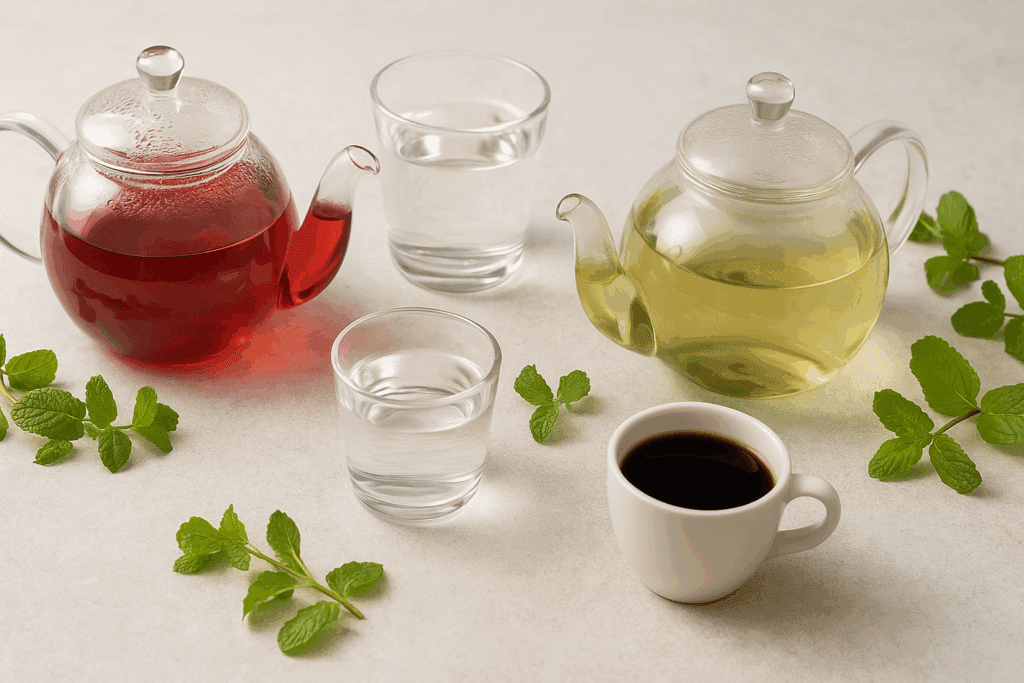
Conclusion: Embracing the Best Breakfast for High Blood Pressure With Confidence and Consistency
Choosing the best breakfast to lower blood pressure naturally is not merely about selecting a few healthy foods—it is about embracing a mindset of intentional, informed nourishment. By focusing on whole grains, plant-based proteins, low-fat dairy or fortified alternatives, and a rainbow of fruits and vegetables, individuals can construct a breakfast that delivers both immediate and cumulative cardiovascular benefits. The integration of mindful eating, stress reduction, and consistent timing further enhances the efficacy of these nutritional choices.
Importantly, this approach does not require extreme restrictions or bland meals. With a bit of planning and creativity, breakfast can become a ritual of self-care and empowerment—one that aligns with both scientific understanding and culinary satisfaction. Whether managing existing hypertension or aiming to prevent it, the right morning meal offers a powerful, accessible step toward better heart health. As the evidence continues to mount, the role of breakfast for high blood pressure is clear: it is not only what you eat, but how and when you eat it, that shapes your long-term wellness trajectory.
Further Reading:
The 17 Best Foods for High Blood Pressure
18 best foods for high blood pressure
DASH diet: Healthy eating to lower your blood pressure


